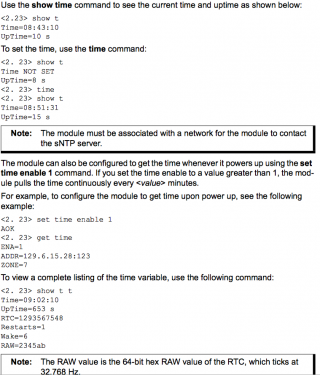Could there have been any more acronyms in the title? probably not.
On to the issue at hand. I would like to sync the teensy Real Time Clock with a Time Server. I am currently using an XBee S6B WiFi that is connected to my local network. (and thus the internet)
Another important detail is I am using the xBee over its serial interface, not its spi interface so that changes allot of the code. I am having trouble with finding a place to start with all of this. I think if I can retrofit the NTP example for the teensy to work with the xBee instead of an Ethernet adapter I would be in a good place but I am feeling a bit lost at the moment.
I have the teensy and xbee details to worry about and the network packet and NTP protocols to decode. Tis all a bit overwhelming for getting started. Can anyone help me sift through all of this?
The end goal is to sync the teensy 3.1 RTC to either network time or internet time over WiFi.
Thanks Guys!
PS: I will keep this post up to date with any progress i have made and when I come to a solution I will also post that here
On to the issue at hand. I would like to sync the teensy Real Time Clock with a Time Server. I am currently using an XBee S6B WiFi that is connected to my local network. (and thus the internet)
Another important detail is I am using the xBee over its serial interface, not its spi interface so that changes allot of the code. I am having trouble with finding a place to start with all of this. I think if I can retrofit the NTP example for the teensy to work with the xBee instead of an Ethernet adapter I would be in a good place but I am feeling a bit lost at the moment.
I have the teensy and xbee details to worry about and the network packet and NTP protocols to decode. Tis all a bit overwhelming for getting started. Can anyone help me sift through all of this?
The end goal is to sync the teensy 3.1 RTC to either network time or internet time over WiFi.
Thanks Guys!
PS: I will keep this post up to date with any progress i have made and when I come to a solution I will also post that here


